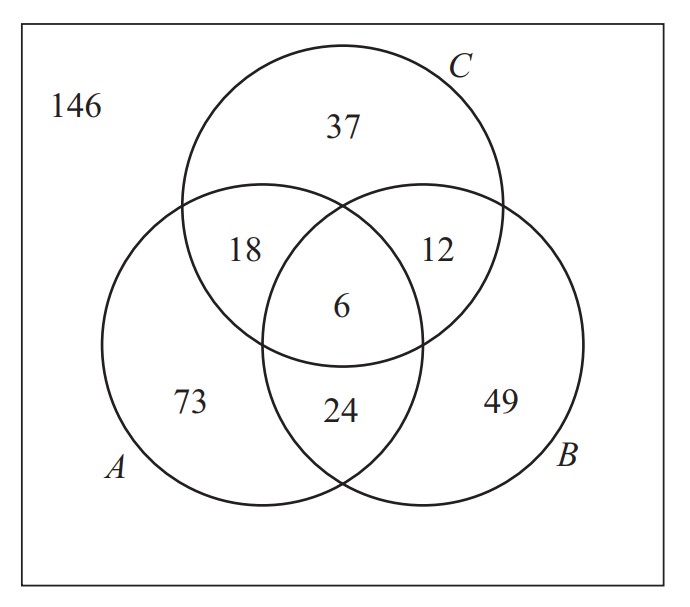Problem:
Mrs. Sanders has three grandchildren, who call her regularly. One calls her every three days, one calls her every four days, and one calls her every five days. All three called her on December , . On how many days during the next year did she not receive a phone call from any of her grandchildren?
Answer Choices:
A.
B.
C.
D.
E.
Solution:
During a -day cycle, there are days that the first one calls, days that the second one calls, and days that the third one calls. The sum overcounts the number of days when more than one grandchild called. There were days when the first and second called. There were days when the first and third called. There were days when the second and third called. Subtracting from leaves days. But the day was added in three times and subtracted out three times, so there were days in which she received at least one phone call. Thus, in each -day cycle, there were days without a phone call. In a year, there are six full cycles. Additionally, she receives no phone call on the or day. Therefore, the total number of days that she does not receive a phone call is days.
In the Venn diagram below, let be the set of days in the year in which the first grandchild calls her, let be the set of days in which the second calls her, and let be the set of days in which the third calls her. Then the region common to the sets represents the days on which all call, which are every days, or days in the year.

The region common to and represents the days on which the first and second grandchild call, which are every days, or days in the year. Since of those days have already been counted, we label the region below the with . Similarly, the region common to and is , so the region to the left of the common region is , and the region to the right is .
Now the first grandchild calls on days, of which have already been counted. Thus the lower left region contains days. Similarly, contains days, so the lower right region contains days, and the top region has days.
All the regions total days, so the number of days without a call is days. Note that in leap years, the lower left region increases to , so the answer is still days.
Answer: .
The problems on this page are the property of the MAA's American Mathematics Competitions